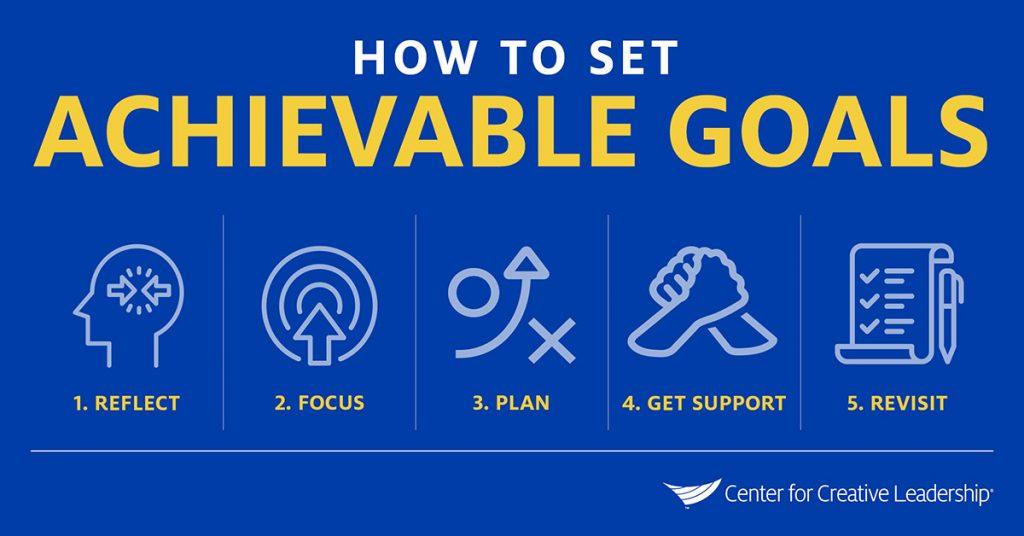
The small business leadership transition plan
We have all listened to the saying, “Less is More.” Business owners attempt this process in their family business, even though senior executives would say that they’re more fruitful a few a long time than others.
When setting the needs of your leadership teams, this saying might not be more important: “Will the needs assist you in working alongside the company productively and assisting you in reaching your goals?” We exhort clients to set 3-5 Yearly Key Activities and 3-5 Quarterly Needs for the leadership group and the comparing bunches required to realize organization alignment. If you choose more than 5 authority objectives, the official group has many! You would like to contract it down so that the new leaders can center on the foremost important goals and let the company stay aligned from authority to the next generation to the front line for the period.
It is exceptionally common when we start working with other leaders that they are persuaded they can take on more than this. Sometimes the company is bigger; now and then, they feel they are a difficult working tall execution company that gets a part of the work done each quarter. This is all exceptionally genuine. But one design leaders see exceptionally frequently is within 12-24 months of working with them and measuring results with exceptionally clear victory criteria, the number continuously goes down. I have indeed seen extremes where companies take on one need for the quarter so that they truly nail it. While leaders think this may be extraordinary, it makes a difference to make the point. Getting effective leaders centered on many objectives is the establishment of an organizational arrangement.
Transitioning Founders
Nonprofit business leaders make new roles and social advantages for their communities. Their enthusiasm and entrepreneurial strategy assist communities in addressing neglected customer satisfaction. They make key decisions, focus on our business, and offer unused ways out of destitution and disappointment for marginalized citizens. New leaders are basic pioneers and, as a bunch, key donors to the nonprofit sector’s position and transition.
Given the founders’ part in managing and maintaining required businesses, it is imperative to celebrate and ensure their ability. Organizations pay near consideration to their moves to guarantee that founders’ one-of-a-kind processes, regularly made throughout most of a proficient lifetime, are not misplaced. Individuals and communities depend on the administrations and programs achieved by founder-led organizations. If these companies are established or come up short, taking after a founder’s citizens-children, later employees, the slight, and the destitute will implement.
From this certain level, the developing frequency of a founder’s lead is cause for concern. companies ought to center required new roles back on these moves to supply great and fitting endings for authors. At the same time, they are ready to offer support, pass on the effective operations resources created by originators, and usher in an energetic modern culture of pioneers. Their inventiveness and ownership are basic to future processes, thoughts, and programs that react to the country’s focus.
The Importance of a Leadership Team

- Gives support and drives the team’s interest. A business owner supports the team by clearly achieving and clarifying goals so that each part of the team gets the company’s objective they are working to attain. They also keep the team on track and moving forward by challenging and upholding deadlines. One way that a compelling leader does this is by checking on each group member’s advance and helping them resolve any issues recently that were enormous problems.
- Engages group individuals to work at their full potential. A great pioneer knows the aptitudes and capabilities of his/her group of individuals and can allot assignments that take advantage of their qualities. A leader empowers communication and builds connections among group individuals, so they work effectively and learn from one another. In expansion, a pioneer knows how to spur and encourage his/her group to do their best work through affirmation and praise.
- Takes obligation for decision-making. When the group cannot form a choice between different choices, a pioneer steps up and chooses the entire group so that work is completed on time. They do this by greatly adjusting enthusiastic and consistent thinking to form an impartial choice that benefits the extent and the group. At the same time, they take obligation for their choices and don’t move the fault onto their group individuals when something goes off-base, but instep works to fix the issue.
Leadership Role in a Team
When it comes to building a fruitful company in any industry, you may get to overcome many challenges. Solid administration group input is one of the key ways to ensure your company’s long-term victory. An authority group should work together, meet frequently, concur on where the business is going, make choices approximately perfect way, the perfect way to attain their points, and how to overcome the challenges they confront.
You must get a group that doesn’t have covering duties, gets what their duties are, and has the aptitude to provide them.
These responsibilities divide into three major areas, which are:
- Sales and marketing – either two different roles or one role with both responsibilities
- Operations – how you develop and deliver your product and/or service
- Finance, administration, internal IT, and HR – depending on the size of your business, this can be one person in charge of all these roles or different leadership transitions.
Pacesetting Leadership
“An individual, bunch or organization that’s the foremost dynamic or fruitful and serves as a show to be imitated.” “An individual or thing that sets the pace, as in racing.”
Pacesetting authority, as the title infers, centers on the pioneer setting the pace for the organization by embracing a “Do as I do. Now.” approach. Group individuals observe the pacesetting pioneer and his or her speed, execution, and quality of work. The same yield is anticipated from the group since the pacesetting pioneer sets an illustration for others to take after. As the group performs, inconvenience looms if the conclusion item isn’t given by the expressed due date and doesn’t meet the leader’s tall desires. What comes about is what tallies the conclusion.
Elements of a Pacesetting Leadership
Self-Motivation
A pacesetting pioneer is profoundly self-motivated. This pioneer includes a solid want to succeed and sets benchmarks of extraordinary execution and flawlessness. Perpetually, a pacesetting pioneer expects that workers have the same level of self-motivation and will, hence, meet the leader’s high-performance benchmarks.
Clearly Communicated Requirements
There’s no room for equivocalness. A successful pacesetting pioneer knows that tall quality can’t be anticipated from a group if prerequisites are hazy. In this manner, this pioneer will start each venture by guaranteeing that necessities are caught on some time recently inquiring workers to total their relegated assignments.
Be that as it may, there’s a flip side. Coordinate reports may get what is required, but a pacesetting pioneer won’t essentially give direction along the way to guarantee that the proper conclusion result is created. A pacesetting pioneer anticipates coordinate reports to be competent and sufficient to know how to deliver the specified yield without being told. Consequently, the pacesetting administration isn’t built on micromanagement. We can all get superior at communication. Here are my tips: How to move forward in communication as a pioneer.
Initiative
Time is continuously working against the grand objectives that pacesetting family members endeavors to realize. In this manner, these family member utilizes extraordinary succession planning to induce things done as rapidly as conceivable. A worker who isn’t keeping up with the leader’s fast-paced approach may be asked to step aside so the pioneer can take over. There’s no time for assignments to drop behind.
Trend-Setting
A pacesetting point person leads by illustration. This pioneer sets the slant for others to take after. Those who can’t keep up with the drift are regularly cleared out at the wayside.

Establishing Goals
For most leaders, goal-setting is taking dynamic steps to attain your desired result. Perhaps your dream is to become an educator, artist, or physical specialist. Each of these dreams includes setting and reaching little (and huge!) objectives. These major objectives can be broken down into smaller, more feasible objectives that will impel you toward success. There are three objectives- handle, execution, and result goals. Process objectives are particular activities or ‘processes’ of performing. For case, pointing to think about it for 2 hours after supper each day. Prepare objectives that are 100% controllable by the individual. Performance goals are based on individual standards. For case, pointing to attain a 3.5 GPA. Individual objectives are generally controllable. Outcome objectives are based on winning. Harvard business review understudy, this seems to be like landing work in your field or succession planning work at a specific business you need. Result objectives are exceptionally troublesome to control since of another leadership style.
Edward Locke and Gary Latham (1990) are pioneers in the goal-setting hypothesis. Agree with their inquiry about objectives not as it influence behavior as well as work execution, but they offer assistance to mobilize ownership which generally leads to better exertion. Higher exertion leads to an increment in a determined effort. Goals offer assistance to communicate with us to create procedures that will enable us to perform at the specified objective level. Accomplishing the culture can lead to future fulfillment and the next generation or disappointment and lower motivation if the objective still needs to be accomplished. Goal setting can be a skillful procedure, beneath the right conditions concurring to inquire about (Locke & Latham, 1991). According to Lunenburg (2011), the motivational effect of objectives may, in reality, be influenced by mediators such as self-efficacy and capacity.
Tracking Progress Strategy
Setting objectives may be an extraordinary way to better yourself as a person and an employee. Once you build up your ownership, it’s imperative to routinely track your advance and guarantee you’re hitting each one. The more objectives you accomplish, the more you focus on developing and moving forward in both your individual and culture. In this article, we investigate what it implies to track your objectives, learn how to keep track of them, rest once in a while and find tips for viably remaining on track with your objectives.
How to keep track of your Goals
- List each of your goals
- Create smaller tasks to help hit each goal
- Assign reasonable deadlines to your goals
- Review your progress regularly
- Establish a reward system for yourself
- Build a schedule to follow
Forgive yourself when you fall off track
What is the Highest and Best Use of Your Time?
Setting a goal would have a lot of factors to start from. For a leader to be successful, we make sure that we follow these processes mentioned above and manage them as an act of being successful. One factor that we need to focus on is time. This strategy can achieve many future goals and develop new leadership roles.

Managing your time and knowing the highest and best use of your time is one job that can minimize your transition process. Think about the position of our time as an employee, the value of our time, and how we use it.
An urgent success requires new roles for immediate action. They’re the ones that shout, “Now!”
Important tasks contribute to your long-term goals, values, and mission. Sometimes an important strategy can also be urgent, but typically, they’re not.
The issue is when we accept that all critical processes are moreover developed. Shockingly, we act in a persistent, always-on state with stimulus-producing innovation that treats all data similarly pressing and squeezing. In such a state, it’s simple to lose locate of the challenges between the developed and only success.

